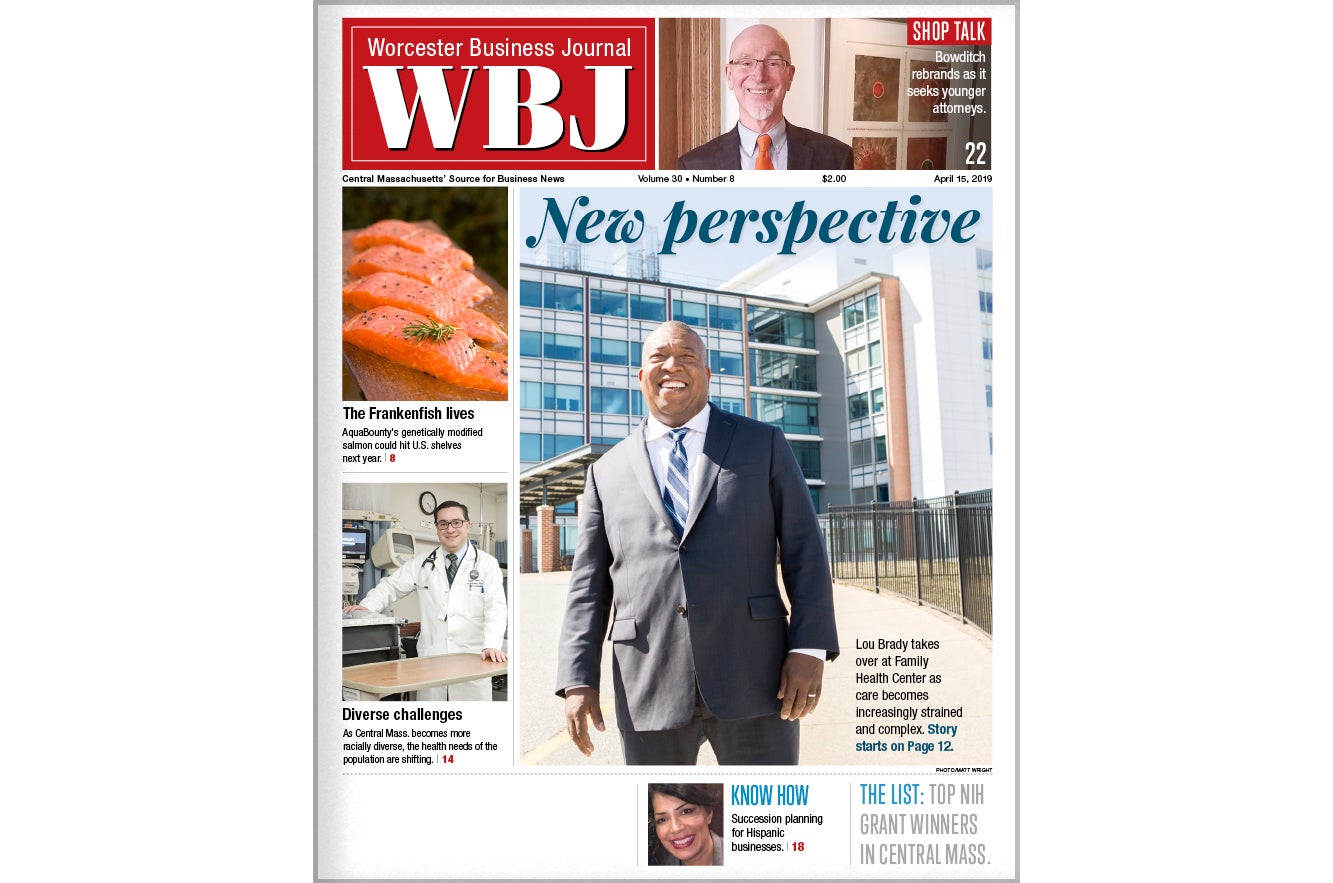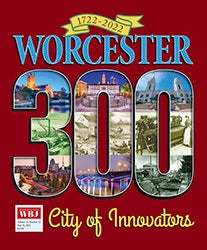Immigrant power
How foreign-born workers, entrepreneurs keep Bay State economy going
A 2005 study by MassInc., a non-partisan research organization, reveals that if it weren’t for immigrants, the state’s labor force would have shrunk over the last two years. The challenge - to provide educational and economic opportunities to all those willing to work, as well as support for those entrepreneurs who create jobs. These opportunities will come at a cost, in a state that already has a reputation for high costs. The question: how to make the wisest use of the resources we have.
MassInc.’s 2005 study, The Changing Face of Massachusetts, observes that without immigrants, the state’s labor force would have been shrinking, as more native-born people move out of the state than move in. And despite the presence of highly-skilled workers coming into the state on H-1B visas, adult immigrants were more than three times as likely to lack a high-school diploma as native-born residents. This creates what the MassInc. report calls "a serious human capital challenge."
Donald Anderson has seen it coming. "Massachusetts has seen the growth in its labor force come almost entirely from immigrants for the past three years," he says. He’s director of the Workforce Central Career Center in Worcester, one of three offices in Milford, Worcester and Southbridge that cover Central Mass., and part of a larger 32 state-supported training and job placement facilities across Massachusetts.
Anderson says the state has a lot of catching up to do to address the out-migration of native-born workers and the influx of foreign-born, and that the state Board of Higher Education has been slow to address the disconnect between the education workers need and what can be provided.
There are two basic reasons for the disconnect. Newcomers with little education are frequently looking for unskilled jobs and a way to move up the ladder, but entry-level jobs with ladders upward are in short supply. Or, immigrants may have a post-secondary education in their home country - even up to the MBA or PhD level – but their credentials in their home country aren’t completely transferable to the U.S. "You need a system where you can take into account that the value of the training associated with [professional] degrees is going to vary country by country," says MassInc. Research Director Dana Ansel, one of the authors of The Changing Face of Massachusetts.
Framingham: from melting pot to crucible |
Drive through downtown Framingham and you’ll see the kind of vibrant streetscape community developers around the country would envy. A constellation of small storefronts, many of them looking sharp and new, offer a variety of services that bring foot traffic downtown. Read the signs and you’ll see that many of them are in Portuguese, the language of Brazil.
The new economic life that Brazilian entrepreneurs have brought to Framingham’s Central Business District has sparked a proposal for larger-scale development of the town’s Arcade project, a multimillion-dollar commercial building renovation that was being put before the Framingham Planning Board as this issue went to press. The developer wants to mitigate the impact on the small businesses that have brought downtown back to life by paying their relocation costs - and wants to keep them in the Central Business District.
Ilma Paixao is a teaching fellow at MIT, tapped for her work on a project to empower Brazilian artisans in their home communities (see "Little Brazil," June 14, 2004 issue). As of July, the project supported 160 schools, 150 farmers, and 135 lacemakers. Their community is benefiting from the proceeds - it has computer and Internet service. But, Paixao indicates, it’s often harder to reach out to Brazilians in the U.S.
Paixao is a member of BRAMAS, an all-volunteer grassroots organization focusing on the needs of the town’s Brazilian population. She says it’s hard to organize the town’s Brazilian entrepreneurs, who work long hours, often speak little English, and often don’t have a long-term plan for their businesses. What’s needed, she says, is a full-time staffer at Town Hall dedicated to working with the Brazilian population.
Meanwhile, Framingham is struggling with its many newcomers. And another grassroots group, CCFIILE (Concerned Citizens and Friends of Illegal Immigrant Law Enforcement) maintains a website, http://www.ccfiile.org/, advocating for crackdowns on illegal immigration, and urging formation of a pilot committee to examine the growth of social services in town.
The inflammatory nature of some of the postings on the website aside, the group’s concern about the strain on town resources such as its school budget is a legitimate one. MassInc., during the course of creating the immigration study, The Changing Face of Massachusetts, struck what John Schneider, MassInc.’s vice president of programs and operations, calls some "third rail" concerns in Framingham. He says that some version of the Framingham scenario is playing out in many Massachusetts towns, which have received more of an influx of immigrants than they are prepared for.
"There’s always been concern in this country about the nature of the community changing, the character of the community changing, the additional social costs that may result because of the immigrant population," says Schneider. He says a lack of response at the federal level has left it up to the states to figure out how to deal with the challenges and opportunities of having so many immigrants, and that the country is overdue for federal reform.
Meanwhile, "It gets passed on down to the local police chief, the local school superintendent – the two local officials that deal with these challenges on a regular basis day in and day out. It’s not easy. ... We’ve probably been slow to recognize that this increase in immigration has also put stress on local services and we haven’t quite figured out how we help local cities and towns engage the immigrant community and integrated them into the workforce. We assume that all cities and towns know how to effectively work with immigrant populations. That’s an area where perhaps we need to learn how to do better, learn from other cities and towns in other parts of the country." C.P.O.
Massachusetts, albeit rich in educational resources, is struggling to provide English as a Second Language training to all who want and need it. And employers, who are struggling to find skilled labor, would hire more of the highly-skilled immigrants who come here if their credentials could be transferred.
"Just because you come from outside, it doesn’t mean you are not skilled," says Jose Ramirez, senior director, HR Medical Group and Diversity at UMass Memorial. Sometimes, people who have credentials in their home country cannot validate those credentials in the U.S., often due to poor English skills. But younger immigrants fluent in English may also be part of a next-generation gap. In dealing with high school students, Ramirez expresses concern that they aren’t pursuing math and science, the gateways to jobs in the health-care field. "My challenge [with them] is to advise students what to pursue," he says. In order to prepare for a meaningful future, "students must know the jobs are there."
The gap between skills and eligibility is particularly pronounced in nursing. Josefina Lanz, executive director of the Lutheran Refugee and Immigrant Services, says very few of the non-profit agency’s clients can take a job in the U.S. at the same level as they had in their home country. Once again, English is the barrier, she says. Foreign-trained nurses are encouraged to take the nurses’ aide exam.
She cites a multitude of career-fit dilemmas: There’s the former lead district attorney in Albania, who cannot practice law in the U.S. There’s the former primary care physician and ophthalmologist working at Harvard University’s genetics lab while undergoing a five-year certification process to become a physician here. Then, there’s a Thailand Èmigré who was able to obtain certification as a computer scientist, only to find that the jobs appropriate for him have gone to India. Finally, there’s a former engineer from Afghanistan who was precluded by war from working in his field - or even obtaining his school transcripts. He’s now working at Home Depot, learning the language and acclimating.
Lanz recalls her first job in the U.S. was as a home-health aide. "It’s sort of like a rite of passage for many immigrants," she says. "I actually recommend it. Our policy [with new arrivals] is get the job, any job."
The growing gap
But "any job" doesn’t work as well as it used to. Employers, from manufacturers to high-tech companies, have outsourced or shed many entry-level jobs over the last 40 years. They’re’ now concerned about their ability to fill the skilled jobs they’ve retained.
That’s particularly true in manufacturing. Most of the state’s second- and third-tier manufacturers - the smaller firms – depend on foreign-born labor for their skilled positions now, according to Jack Healy, director of the Massachusetts Manufacturing Extension Partnership. Due to attrition in the ranks of skilled workers as jobs go overseas or disappear, the region’s manufacturing workforce is getting older. And that will spell problems down the road.
James Powers, president of Worcester-based millwork and store display company Continental Consolidated Industries Inc., says it’s taken nine months to fill two of five skilled-level vacancies there. The average age of the company’s workforce has been going up for the past eight or nine years. "We’re working with the voke schools," he says, "But the [skilled job-ready] pool isn’t there yet."
"The lower-skilled jobs have been the first to leave [the U.S.] or go out of existence," says Anderson. These were the jobs in which a bilingual supervisor oversaw people from his or her country of origin, who only spoke in their native language. When those jobs disappear, he says, the workers are stranded. "We see that constantly," he says.
The simple answer would appear to be: More ESL classes, particularly for the unemployed. However, Anderson says, there are very few such programs in existence. First of all, it’s costly, between $3,000 and $4,000 per student. Public funding is difficult to get for an as-needed class for laid-off workers. Workforce Central is working with several companies that have had recent layoffs, to try to gather enough non- and limited-English speakers together to start a class.
Quinsigamond Community College has done some on-site company training. But QCC President Gail Carberry says that the costs of ESL at a state college can be prohibitive for foreign-born students. Puerto Rican natives qualify for federal Pell grants, but most other immigrants pay out-of-state rates. Meanwhile, the longer access to ESL is denied, the longer the immigrant’s income is likely to stay low, pressuring them to depend on public health care, food stamps, and other state and federal aid. "When those resources are being directed into [services] they’re not funding the colleges and universities," Carberry says. She’d like to see the situation change and is actively scouting for solutions.
A community of their own
But the story of immigrants in Central Massachusetts is also a story of opportunities taken. And there are already signs that immigrants across all countries of origin are building their futures here and putting down economic roots.
UMass Medical School’s workforce represents 64 countries, two territories - and all walks of life. Of its 6,600 employees, more than 2,000 hold a PhD or an MD. More than 500 of them are on work visas, and 100 of them are PhD students. They’re not subject to immigration quotas because of UMMS’ status as a research institution. The school, which has a $173-million research budget, employs two immigration specialists full time. It offers immigrant-friendly services such as helping newcomers adjust to the community, and provides help for those international employees who want to bring their parents to the country. It also has a partnership with the Worcester Literacy Volunteer program to provide ESL services for those who can read English well but need to become more conversational, according to Phillips Kerr, director of compensation, benefits and HR services.
Then, there are the immigrants who strike out on their own - the entrepreneurs. In downtown Worcester, not far away from the UMass campus, Robert Thomas draws a line. It’s the intersection of Main and Chandler streets, the latter of which is the home of the Martin Luther King Business Empowerment Center, of which he’s president, founder and CEO. Thomas says there are more small businesses south of Chandler Street than in the city’s Central Business District. Their sales dollars and their headcounts may be small, but they represent immigrants’ power to create jobs, not just hold them.
Chizoma Nosike is an example. She and her husband Isidore came to the U.S. 10 years ago. Both hold MBAs - Isidore, two, and Chizoma, who is also a registered physical therapist, one. Chizoma recently opened her own home health care agency, Acclaim Home Health Care Inc., housed at the Martin Luther King Business Empowerment Center, where Isidore is vice president of facilities and tenant relations.
She has made a deliberate point of hiring a multinational workforce. Greater Worcester’s minority population gets sick and ages as does anyone else, she observes, and when they do, they will prefer someone of their own background. "Who better to look after minorities but minorities?" she says. "I understand why people are afraid of divulging information to someone not of their color or culture."
A change is coming
Last but not least, is Peter Rios. He’s the newly-appointed bilingual mortgage originator at Bay State Savings Bank. In his new job, he’ll be tapping into Central Mass.’ immigrant Latino market. "This market feels comfortable dealing with someone who speaks their own language," he says. Bay State Savings Bank has captured checking and savings account business from the Latino community, he says, but not mortgages. He says that in Boston, he’s seen a rise in first-time homebuying among Latinos over the last five to seven years, among a demographic that traditionally has rented. Increased awareness among Latinos that they can increase personal wealth by becoming landlords rather than tenants, along with growth of the first-time homebuyer market, represents a cultural change, he says.
They now have more good choices. New federal and state mortgage programs offering federally-backed products for low and moderate-income buyers give them alternatives to subprime lenders. Rios says the market is ready. Latino buyers are more educated than they were 15 years ago and are now more likely to speak out against predatory lenders - and even to police their communities spreading the word about the bad apples. The increased investment in new homeowners, he indicates, will pay back communities in the form of a stronger, more diverse tax base. And that’s a good thing in any language.
Intern Eva Ilic contributed
to the reporting in this story.
Christina P. O’Neill can be reached at coneill@wbjournal.com









0 Comments